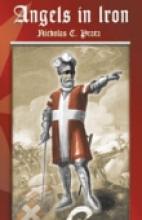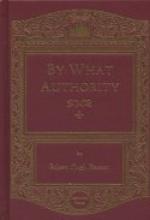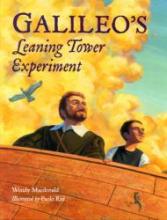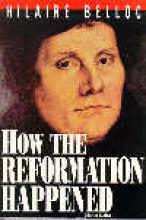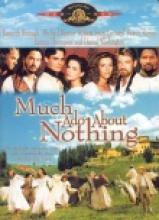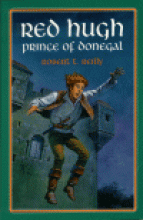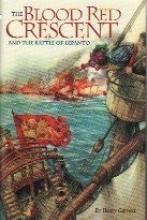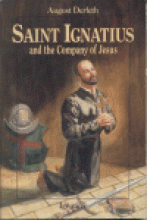16th century
Angels in Iron
Prata brings this fascinating tale to life by giving the characters real personalities. They are not mere pawns used to further the plot of the story. Interesting subplots abound. Will the feuding Florentines, Di Corso and Rambaldi, succeed in killing one another before the enemy has a chance or will the grace of God intervene?
Because of a few "choice" words, very minor sexual references (nothing coarse or inappropriate), and extreme violence at times (bodies are getting hacked to pieces), this novel would be more appropriate for a mature high school student than younger children. While the violence is definitely graphic at times, especially in the heat of battle ("The decapitated body stumbled down the hill, neck spewing blood...") since war is hell, it is most realistically portrayed.
Why read a story of such blood and gore? The overwhelming theme is courage, honor, and the Catholic faith. The knights know what the loss of this island will mean. They are willing to die for their faith. There are also many touching moments regarding their Faith. Even though they are in the midst of war, the knights celebrate the feast of Corpus Christi. A conversation tairkes place between a squire from Germany who wants to take up arms in defense of the Faith and a knight from Italy who advises, "All in good time, little brother. Youth must learn that service is more than death. We must strive to live for The Word before we can die for it."
This book is a real page-turner: Will the knights be able to hold on to the forts in the midst of wave after wave of bombardments and attacks? What really happened at the siege in Malta? Who is going to win the battle of wits and psychological stamina? And ultimately, will the knights be able to fearlessly defend Catholic Europe from the invasion of the scourge of Islam? Read Angels in Iron to find out.
By What Authority
It is early in the reign of Queen Elizabeth. Religion and politics are curiously mixed and confused. How will the people of England survive this tumultuous time and emerge as one of the great powers on the earth. This is the setting for By What Authority by Lord Robert Hugh Benson. It is the story of how two families, one Catholic and one Protestant, sort through the confusion and endure the suffering of finding and maintaining a religious identity.
The head of the Catholic family, Sir Nicholas Maxwell, is the Lord of a section in England just south of London. The Protestant family, Norris, lives next door and has a good rapport with the old Catholic family. The primarily Protestant village has great love for the Lord and his family and forgive them their superstitious religion. It is obvious that the younger Maxwell son is in love with Isabel Norris but the differences in their religions keep them apart – for a time.
Isabel Norris is a Jane Austen -type character, full of virtue and feminine moderation. She is happily Protestant and deeply devoted to her beloved Jesus. Her father, sensing the Maxwell youth's love for her, and worried lest the Maxwell ladies should convert her daughter to Catholicism, sends her to a friend in the country who is STRICTLY Puritan. His hope is that she will be repelled by the strictness and return to his middle-of-the-road Church of England Protestantism. Isabel is indeed horrified at the fiery God portrayed in the Puritan church but the movements of her heart and religious sentiments foreshadow her as a Catholic at heart. While she is away her father dies and when she returns, Lady Maxwell's sister becomes her living companion. This sister is actually a nun who was sent away from her convent and so begins the slow conversion of Isabel. Sir Benson is masterful at describing the mental and spiritual movements of a soul and so the reader is brought through all the agitation and wonder of Isabel discovering, discarding and finally accepting the truth about the Catholic Faith. In the midst of her struggles, young Hubert Maxwell has stated his intentions toward her and begs her to wait for him, claiming that the religious issue will resolve itself somehow. He leaves to sail off with Sir Francis Drake on one of his first piratical voyages. When he returns, ready to embrace her AND proud to announce his conversion to her Protestant faith, he finds that she has very nearly converted to Catholicism. He is furious and offers to be whatever religion she wants. In saying that, he has lost her. To her, the Faith is something so intrinsic that it cannot merely be put on and off as is convenient. She maintains her love for him through the whole story but she knows that she cannot be his wife.
All the while Isabel is suffering and coming into the Catholic Faith, her brother Anthony has graduated from Cambridge and, full of patriotism and religious fervor, sets out to set himself up in the world. He goes to work for the Archbishop of Canterbury and so is thrust into the politics and religion of the times. He has an occasion to meet and debate with a Catholic man and feels his Protestant beliefs disturbed. He also witnesses Edmund Campion's so-called trial and his execution and is very much affected by it. Sir Benson spends a lot of time describing the trial and relating the arguments made on both sides. During this trial, Anthony is basically converted. He sees that ALL the religious questions boil down to who has the authority to interpret the Bible and speak for Christ. Protestantism taken to its extreme would have each person interpreting the Bible as he would and becoming his own authority. That in itself did not fit with scripture, he thought. He realizes that the Church of Rome has the greatest claim to that authority. He submits his resignation to the Archbishop and attends an Ignatian Retreat with Father Robert Persons. At the end of the retreat he goes to tell his sister, Isabel that he has converted only to find her in the same situation. They come into the Church together to the great joy of the Maxwells (excepting Hubert).
Anthony becomes a priest at a seminary on the Continent and returns with Isabel to England at the time of the defeat of the Spanish Armada. He eventually is captured and threatened with torture and death. He meets with the Queen herself and she offers to let him leave the country alive yet have it let out that he signed "the oath" which says that he acknowledges the Church of England. He, of course, refuses and the enraged Queen sends him off to the torturers. He dies on Easter morning as Isabel kneels at his bedside reading the Gospel of the day. She has decided to leave England and perhaps enter religious life.
One of the most interesting aspects of the story is Benson's portrayal of Queen Elizabeth. She is fierce and unforgiving yet feminine and remorseful. He is very successful at describing the development of the awe in which her subjects hold her. She is awe inspiring. She is a formidable enemy and very moved by the loyalty of her people. She admires the gallantry and strength of the Catholic martyrs. She does not seem to be a deeply religious person herself and so cannot understand why these Catholics can't just accept things in order to live and have peace. He portrays her as having a certain goodness that is overshadowed by a multitude of forces, both within her and without.
The story would be excellent for upper high school level (and any interested adult). It might be interesting to read it along with a biography of St. Edmund Campion or Sir Francis Drake, and some history of the Spanish Armada. It is a compelling period in history and bears some deep thought as to its effect on today's world.
Galileo's Leaning Tower Experiment
Science readers are to be found if you look around enough as this book demonstrates. It is the fictional story of Massimo, a boy who regularly throws his uncle's lunch off a bridge to his boat as his uncle rows by below. Galileo happens to see that the bread and the cheese land at the same time. The story ends atop the leaning Tower of Pisa, as legend suggests Galileo did.
The illustrations are a little disappointing, the people in particular. The story is sometimes forced as math and science readers often are; however, overall it is a great tale that teaches a basic principle of physics sure to have your children dropping objects from heights. It even alludes to Galileo's ramp experiments on acceleration. The last page briefly fills in the reader on the period in history, what in the story is fact and fiction, and the formula for calculating speed.
Overall this is a great introductory physics science book.
How the Reformation Happened
This book is a surprisingly readable and interesting account of "How the Reformation Happened". Although it is written from a Catholic perspective, Mr. Belloc is very fair in dishing out the blame to the appropriate people on both sides. The years covered are 1517 (when Martin Luther affixed his protest against the Indulgences to a church door in Wittenberg, Germany) to 1648, but also includes commentary of the implications of the "Reformation" on our own times. He covers all the major countries involved and is very skilled at explaining the essentials of what happened and the lessons we should take from it. This is the answer for homeschoolers looking for the whole story of what is so often misrepresented in History texts - whether Protestant or Secular. It makes good reading for adults who are teaching younger children or for high schoolers to read on their own. Includes a complete index.
Much Ado About Nothing
During the credits, the men and women (who are in separate places) are shown bathing and dressing up while preparing to meet each other after the men had been away at war. While this is done in a fairly innocent manner, there are plenty of naked "backsides" in this scene.
There is a small scene during the costumed party involving a couple who are not behaving themselves very well. It does help establish their characters which play an essential role in the story. Although it is not terribly graphic (and might go unnoticed by small children), it is probably not suitable for younger viewers.
Directed by Kenneth Branagh, PG-13, 1 hr. 51 min., Color
Starring: Kennegth Branagh, Michael Keaton, Keanu Reeves, Emma Thompson and Denzel Washington
Red Hugh, Prince of Donegal
Stars of Fortune
Set in England, mid 1500s, Catholic perpsective. As explained in the postscript, this book is the author's recreation of a legend surrounding the home belonging to the Washington family (who claims our first president as a descendent). According to the legend, Elizabeth I was once hidden in the house while fleeing pursuers. The story takes place during the tumultous reign of Mary I (eldest offspring of Henry VIII) at which time the "old religion" has been reinstated. (This is a rather subtle backdrop - one of the children notices that their housekeeper - who was a nun in hiding - cried for joy all through the Mass; their father is rebuilding parts of the house to which he secretly adds a small hiding place - presumably for priests in hiding.) Some of the older boys have "romantic" notions of trying to rescue the princess and all sorts of adventures ensue. An enjoyable story in itself, it provides much substance for discussion as well.
The Blood Red Crescent
This title is also available in softcover, published by Sophia Institute Press.
Saint Ignatius and the Company of Jesus
We are reminded in the story of what effect the stories of the lives of the Saints can have. The story of Ignatius is of particular value, not only because of his great effect on the world, but also because of the glimpse we are given of the spiritual development that takes place within him as he seeks to do God's will. Despite the depth of content, the story is told in a simple enough manner to be understood and appreciated by the whole family.

